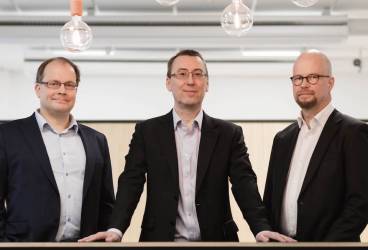5G technology accelerates and secures authorities’ communications – the review reveals why the transition takes time?

“5G can improve the efficiency of authority operations as well as the safety of the entire society,” says Antti Kauppinen, Chief Technology Officer at Erillisverkot Group.
However, the adoption of new technology has been slowed down by the special requirements of the mission critical operating environment, which relate to, for example, data security, availability and reliability of services, and preparedness.
“In all technology, one must be prepared for the day when the technology in question is not in use. In the current global situation, technology faces threats as its functionality or non-functionality is sought to be exploited for political or military purposes. The EU has identified these threats and is trying to reduce its dependency on actors outside the EU,” Kauppinen reminds.
5G technology can fully utilize several built-in features that enhance data security, such as newer encryption algorithms, improved network internal security, and roaming data security features.
5G opens the door to new AI solutions
The benefits of 5G are coming to critical communications – especially as development moves towards 5G SA networks and more advanced 5G services. Kauppinen explains that the first phase of 5G NSA already offers advantages over 4G technology.
“5G allows for better automation of processes, which opens the door to new AI solutions. There are a tremendous amount of different sensors and cameras worldwide, and it is impossible for humans to process such amounts of data. With 5G, more data can be collected from the field, which is then provided to users already analyzed,” Kauppinen summarizes.
For now, humans make decisions based on data. In the future, AI will act as a filter and be able to assess which authority needs what information in different situations.
Network Slicing allows for Better Services
One of the new features offered by 5G networks is network slicing. It allows a part of the mobile network resources to be reserved for a specific purpose, such as for the telecommunications of authorities or IoT services.
In 5G networks, data processing can be done on the edge, as close to the end-users as possible, instead of transferring it to a private or public cloud for processing. This enables services that require very low latency, such as virtual and augmented reality services (VR/AR).
Virtual and augmented reality services, accelerated by 5G technology, will offer, among other things, learning environments and solutions tailored to different operational needs. For safety operators, the most important new opportunities include creating a training environment and obtaining a better situational picture.
Situational Awareness on the Windshield
There are plans for new types of services based on information projected into the field of view. For example, additional information can be projected onto the windshield of a police car, enriching the naturally perceived environment. Situational information can also be enriched with additional details, such as information about a fleeing car thief.
Kauppinen reminds that development is certainly not stopping: the technology of the next-generation 6G mobile networks has been the subject of research for a few years now.
The 6G technology generation will further increase the capacity, transmission speed, and reduce the latency of mobile networks. For safety operators, 6G promises improvements in operational reliability and trustworthiness. The first services based on 6G networks can be expected at the turn of the 2030s.
Explore the entire review: https://www.erillisverkot.fi/en/mission-critical-top-tech-trends-2023/
The latest 5G technology review is published as part of the Mission Critical Top Tech Trends reviews by Erillisverkot, which Erillisverkot Group publishes 1-2 times a year with varying themes. The review presents the opportunities offered by 5G technology for next generation mission critical Virve 2 services in Finland and explains why the transition of authorities to the 5G era takes time.
Mission Critical Top Tech Trends 2023 review is based on the views of experts in Erillisverkot.







